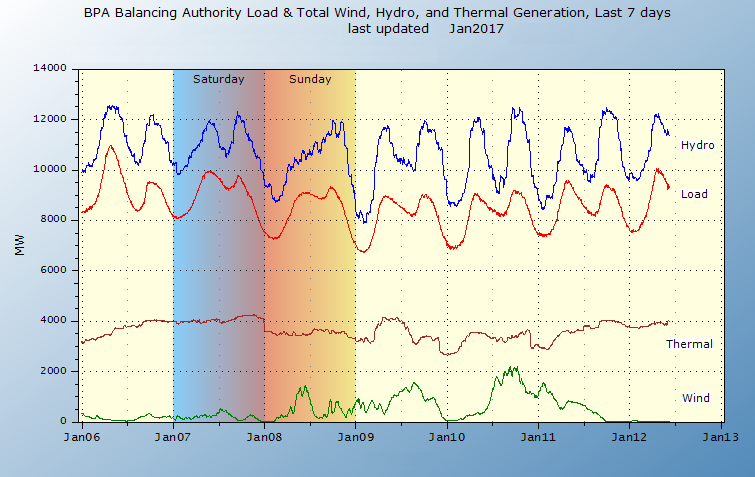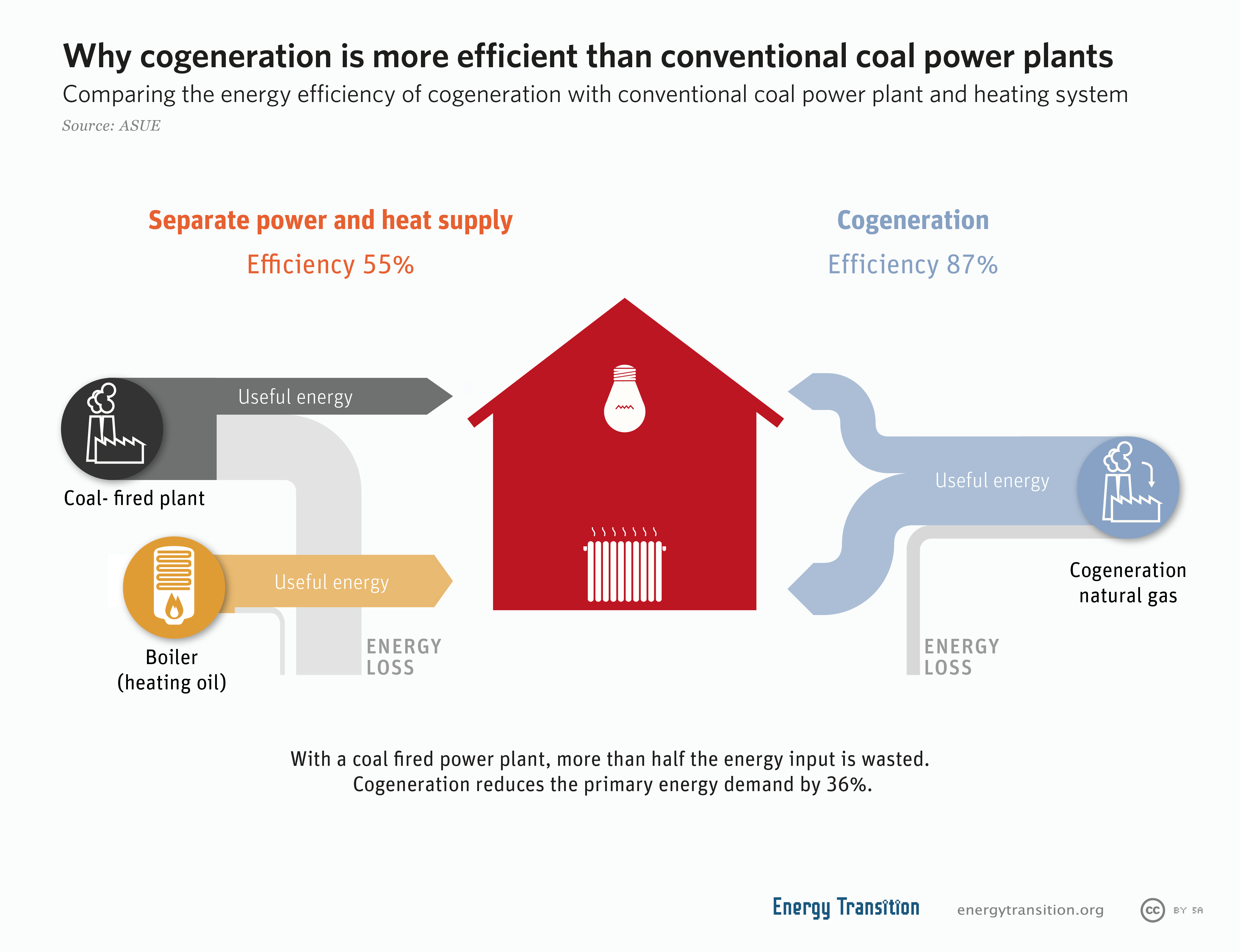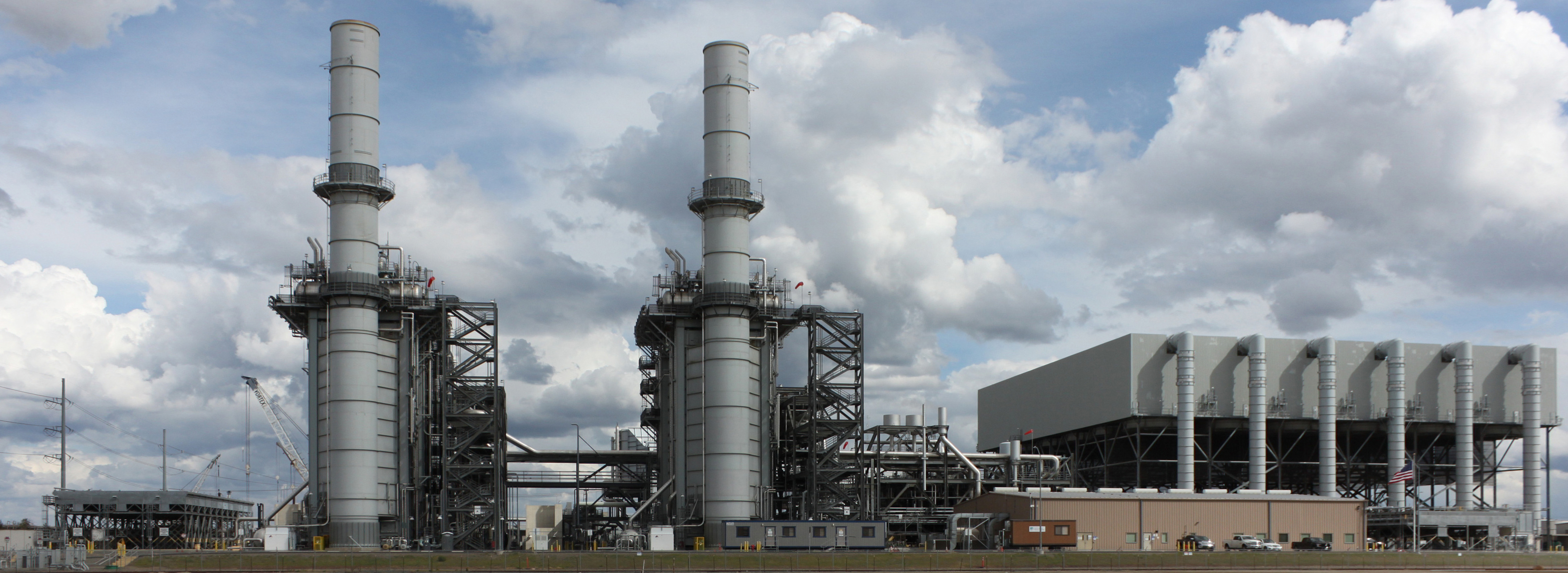|
Load Following
A load-following power plant, regarded as producing mid-merit or mid-priced electricity, is a power plant that adjusts its power output as demand for electricity fluctuates throughout the day. Load-following plants are typically in between base load and peaking power plants in efficiency, speed of start-up and shut-down, construction cost, cost of electricity and capacity factor. Base load and peaking power plants Base load power plants are dispatchable plants that tend to operate at maximum output. They generally shut down or reduce power only to perform maintenance or repair or due to grid constraints. Power plants operated mostly in this way include coal, fuel oil, nuclear, geothermal, run-of-the-river hydroelectric, solar, biomass and combined cycle natural gas plants. Peaking power plants operate only during times of peak demand. In countries with widespread air conditioning, demand peaks around the middle of the afternoon, so a typical peaking power plant may star ... [...More Info...] [...Related Items...] OR: [Wikipedia] [Google] [Baidu] |
Merit Order
The merit order is a way of ranking available sources of energy, especially electrical generation, based on ascending order of price (which may reflect the order of their short-run marginal costs of production) and sometimes pollution, together with amount of energy that will be generated. In a centralized management scheme, the ranking is such that those with the lowest marginal costs are the first sources to be brought online to meet demand, and the plants with the highest marginal costs are the last to be brought on line. Dispatching power generation in this way, known as economic dispatch, minimizes the cost of production of electricity. Sometimes generating units must be started out of merit order, due to transmission congestion, system reliability or other reasons. In environmental dispatch, additional considerations concerning reduction of pollution further complicate the power dispatch problem. The basic constraints of the economic dispatch problem remain in place but the ... [...More Info...] [...Related Items...] OR: [Wikipedia] [Google] [Baidu] |
Peaking Power Plant
Peaking power plants, also known as peaker plants, and occasionally just "peakers", are power plants that generally run only when there is a high demand, known as peak demand, for electricity. Because they supply power only occasionally, the power supplied commands a much higher price per kilowatt hour than base load power. Peak load power plants are dispatched in combination with base load power plants, which supply a dependable and consistent amount of electricity, to meet the minimum demand. Although historically peaking power plants were frequently used in conjunction with coal baseload plants, peaking plants are now used less commonly. Combined cycle gas turbine plants have two or more cycles, the first of which is very similar to a peaking plant, with the second running on the waste heat of the first. That type of plant is often capable of rapidly starting up, albeit at reduced efficiency, and then over some hours transitioning to a more efficient baseload generation mode ... [...More Info...] [...Related Items...] OR: [Wikipedia] [Google] [Baidu] |
Anthracite
Anthracite, also known as hard coal and black coal, is a hard, compact variety of coal that has a lustre (mineralogy)#Submetallic lustre, submetallic lustre. It has the highest carbon content, the fewest impurities, and the highest energy density of all types of coal and is the highest Coal analysis#Coal classification by rank, ranking of coals. The Coal Region of Northeastern Pennsylvania in the United States has the largest known deposits of anthracite coal in the world with an estimated reserve of seven billion short ton, short tons. Coal in China, China accounts for the majority of global production; other producers include Coal in Russia, Russia, Coal in Ukraine, Ukraine, Coal in North Korea, North Korea, Coal in South Africa, South Africa, Coal in Vietnam, Vietnam, Coal in Australia, Australia, Coal in Canada, Canada, and the Coal mining in the United States, United States. Total production in 2020 was 615 million tons. Anthracite is the most metamorphism, metamorphosed ty ... [...More Info...] [...Related Items...] OR: [Wikipedia] [Google] [Baidu] |
Bonneville Power Administration
The Bonneville Power Administration (BPA) is an American federal agency operating in the Pacific Northwest. BPA was created by an act of United States Congress, Congress in 1937 to market electric power from the Bonneville Dam located on the Columbia River and to construct facilities necessary to transmit that power. Congress has since designated Bonneville to be the marketing agent for power from all of the federally owned hydroelectric projects in the Pacific Northwest. Bonneville is one of four regional Federal Power Marketing Administration, power marketing agencies within the United States Department of Energy, U.S. Department of Energy (DOE). Operations The power generated on BPA's grid is sold to public utilities, private utilities, and industry on the grid. The excess is sold to other grids in Canada, California and other regions. Because BPA is a public entity, it does not make a profit on power sales or from providing transmission services. BPA also coordinates ... [...More Info...] [...Related Items...] OR: [Wikipedia] [Google] [Baidu] |
Hydroelectric Dam
Hydroelectricity, or hydroelectric power, is Electricity generation, electricity generated from hydropower (water power). Hydropower supplies 15% of the world's electricity, almost 4,210 TWh in 2023, which is more than all other Renewable energy, renewable sources combined and also more than nuclear power. Hydropower can provide large amounts of Low-carbon power, low-carbon electricity on demand, making it a key element for creating secure and clean electricity supply systems. A hydroelectric power station that has a dam and reservoir is a flexible source, since the amount of electricity produced can be increased or decreased in seconds or minutes in response to varying electricity demand. Once a hydroelectric complex is constructed, it produces no direct waste, and almost always emits considerably less greenhouse gas than fossil fuel-powered energy plants. [...More Info...] [...Related Items...] OR: [Wikipedia] [Google] [Baidu] |
Cogeneration
Cogeneration or combined heat and power (CHP) is the use of a heat engine or power station to generate electricity and useful heat at the same time. Cogeneration is a more efficient use of fuel or heat, because otherwise- wasted heat from electricity generation is put to some productive use. Combined heat and power (CHP) plants recover otherwise wasted thermal energy for heating. This is also called combined heat and power district heating. Small CHP plants are an example of decentralized energy. By-product heat at moderate temperatures ( can also be used in absorption refrigerators for cooling. The supply of high-temperature heat first drives a gas or steam turbine-powered generator. The resulting low-temperature waste heat is then used for water or space heating. At smaller scales (typically below 1 MW), a gas engine or diesel engine may be used. Cogeneration is also common with geothermal power plants as they often produce relatively low grade heat. Binary cycle ... [...More Info...] [...Related Items...] OR: [Wikipedia] [Google] [Baidu] |
Combined Cycle
A combined cycle power plant is an assembly of heat engines that work in tandem from the same source of heat, converting it into mechanical energy. On land, when used to make electricity the most common type is called a combined cycle gas turbine (CCGT) plant, which is a kind of gas-fired power plant. The same principle is also used for marine propulsion, where it is called a combined gas and steam (COGAS) plant. Combining two or more thermodynamic cycles improves overall efficiency, which reduces fuel costs. The principle is that after completing its cycle in the first engine, the working fluid (the exhaust) is still hot enough that a second subsequent heat engine can extract energy from the heat in the exhaust. Usually the heat passes through a heat exchanger so that the two engines can use different working fluids. By generating power from multiple streams of work, the overall efficiency can be increased by 50–60%. That is, from an overall efficiency of the system of say ... [...More Info...] [...Related Items...] OR: [Wikipedia] [Google] [Baidu] |
Diesel Generator
A diesel generator (DG) (also known as a diesel genset) is the combination of a diesel engine with an electric generator (often an alternator) to generate electrical energy. This is a specific case of an engine generator. A diesel compression-ignition engine is usually designed to run on diesel fuel, but some types are adapted for other liquid fuels or natural gas (CNG). Diesel generating sets are used in places without connection to a power grid or as an emergency power supply if the grid fails, as well as for more complex applications such as peak-lopping, grid support, and export to the power grid. Diesel generator size is crucial to minimize low load or power shortages. Sizing is complicated by the characteristics of modern electronics, specifically non-linear loads. Its size ranges around 50 MW and above, an open cycle gas turbine is more efficient at full load than an array of diesel engines, and far more compact, with comparable capital costs; but for regular pa ... [...More Info...] [...Related Items...] OR: [Wikipedia] [Google] [Baidu] |
Electrical Grid
An electrical grid (or electricity network) is an interconnected network for electricity delivery from producers to consumers. Electrical grids consist of power stations, electrical substations to step voltage up or down, electric power transmission to carry power over long distances, and finally electric power distribution to customers. In that last step, voltage is stepped down again to the required service voltage. Power stations are typically built close to energy sources and far from densely populated areas. Electrical grids vary in size and can cover whole countries or continents. From small to large there are microgrids, wide area synchronous grids, and super grids. The combined transmission and distribution network is part of electricity delivery, known as the ''power grid''. Grids are nearly always synchronous, meaning all distribution areas operate with three phase alternating current (AC) frequencies synchronized (so that voltage swings occur at almost the same ... [...More Info...] [...Related Items...] OR: [Wikipedia] [Google] [Baidu] |
Kilowatt-hour
A kilowatt-hour ( unit symbol: kW⋅h or kW h; commonly written as kWh) is a non-SI unit of energy equal to 3.6 megajoules (MJ) in SI units, which is the energy delivered by one kilowatt of power for one hour. Kilowatt-hours are a common billing unit for electrical energy supplied by electric utilities. Metric prefixes are used for multiples and submultiples of the basic unit, the watt-hour (3.6 kJ). Definition The kilowatt-hour is a composite unit of energy equal to one kilowatt (kW) multiplied by (i.e., sustained for) one hour. The International System of Units (SI) unit of energy meanwhile is the joule (symbol J). Because a watt is by definition one joule per second, and because there are 3,600 seconds in an hour, one kWh equals 3,600 kilojoules or 3.6 MJ."Half-high dots or spaces are used to express a derived unit formed from two or more other units by multiplication.", Barry N. Taylor. (2001 ed.''The International System of Units.'' (Special publicatio ... [...More Info...] [...Related Items...] OR: [Wikipedia] [Google] [Baidu] |





